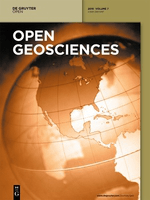
Open Geosciences
Scope & Guideline
Innovating Discussions in Environmental Science.
Introduction
Aims and Scopes
- Geospatial Analysis:
The journal extensively covers the application of geospatial technologies such as GIS, remote sensing, and spatial modeling in understanding geological phenomena and environmental issues. - Geological Research and Assessment:
It includes studies on geological formations, petrology, mineralogy, and geochemical characteristics, advancing knowledge in earth sciences through empirical and theoretical research. - Environmental Impact Studies:
Research focusing on the assessment of environmental risks, natural resource management, and the implications of geological processes on ecosystems is a core area of interest. - Natural Hazards and Risk Assessment:
The journal emphasizes research on natural hazards like landslides, earthquakes, and floods, including methodologies for risk assessment and management. - Innovative Methodologies:
Open Geosciences showcases innovative techniques such as machine learning, advanced statistical methods, and numerical modeling to solve complex geoscientific problems.
Trending and Emerging
- Remote Sensing Applications:
There is a growing trend in utilizing remote sensing technologies for various applications, including land use monitoring, environmental assessment, and disaster management, indicating a shift towards more technologically advanced methodologies. - Machine Learning and Data Science in Geosciences:
The incorporation of machine learning techniques for predictive modeling and data analysis is becoming increasingly prominent, showcasing the journal's alignment with modern technological advancements. - Climate Change and Environmental Sustainability:
Research addressing the impacts of climate change, resilience, and sustainable practices within geological contexts is on the rise, highlighting the journal's commitment to addressing global challenges. - Integrated Natural Resource Management:
There is an emerging focus on studies that integrate various aspects of natural resource management, including water, soil, and biodiversity, reflecting a holistic approach to geosciences. - Geotourism and Geoheritage:
Papers exploring the potential of geotourism and the conservation of geoheritage sites are gaining traction, indicating a growing interest in the intersection of geology and tourism.
Declining or Waning
- Traditional Geological Mapping:
There has been a noticeable decrease in papers focusing solely on conventional geological mapping techniques, as the field shifts towards more integrated and technology-driven approaches. - Static Environmental Assessments:
Research that primarily aims at static assessments of environmental conditions without dynamic modeling or consideration of climate change impacts is less frequently published. - Local Case Studies without Broader Implications:
Papers that focus solely on localized geological studies without broader geographical or theoretical implications are becoming less prominent, as the journal seeks to emphasize research with wider applicability.
Similar Journals
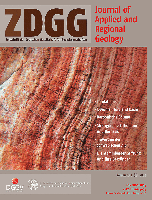
Zeitschrift der Deutschen Gesellschaft fur Geowissenschaften
Pioneering Discoveries: Where Geoscience Meets InnovationZeitschrift der Deutschen Gesellschaft für Geowissenschaften is a prominent academic journal published by E Schweizerbart’sche Verlagsbuchhandlung, dedicated to advancing research in the field of Earth and Planetary Sciences. With its ISSN 1860-1804 and E-ISSN 1861-4094, this journal provides a platform for researchers to disseminate high-quality scientific articles and insights that contribute to our understanding of geological and environmental phenomena. Over the years, it has established itself as a reputable source within its category, holding a Q3 ranking among the Earth and Planetary Sciences (miscellaneous) journals in 2023, and achieving an impressive 85/195 rank in Scopus, placing it in the 56th percentile. The journal is published from Germany, specifically at Johannesstraße 3A, D 70176 Stuttgart, where it fosters a collaborative environment for scholars, professionals, and students alike. Although currently not an Open Access journal, it offers critical insights into various geoscience topics, making it an essential resource for those engaged in geological research and education. With its converged years stretching from 2008 to 2024, Zeitschrift der Deutschen Gesellschaft für Geowissenschaften is poised to continue its impactful role in the geosciences community.
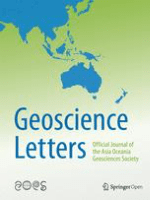
Geoscience Letters
Elevating Geoscience Research to New HeightsGeoscience Letters, published by Springer, is a prominent open-access journal in the field of Earth and Planetary Sciences, recognized for its dedication to advancing knowledge and research in this vital area of study. With a reported impact factor that reflects its esteemed position—ranking in the Q1 quartile of Earth and Planetary Sciences, particularly as the journal ranks #48 out of 195 in the general category according to Scopus—the journal serves as a vital resource for researchers, professionals, and students. Since its inception in 2014, Geoscience Letters has facilitated the dissemination of high-quality research and critical insights, aiming to bridge the gap between scientific discovery and societal needs. Its commitment to open access ensures that the latest findings are readily available to a global audience, thus enhancing collaboration and innovation within the geosciences community.

China Geology
Exploring the Depths of Earth SciencesChina Geology, published by KEAI PUBLISHING LTD, is a leading open-access journal that serves as a pivotal platform for disseminating high-quality research across a wide spectrum of Earth sciences. Since its inception in 2018, the journal has rapidly established itself with an impressive Q1 ranking in multiple critical categories, including Geology, Economic Geology, and Oceanography, among others, reflecting its significant contribution to the academic community. Positioned as a top-tier journal in the Earth Planetary Sciences domain, it ranks #22 out of 321 in Geology and exhibits an admirable impact in sub-fields such as Earth-Surface Processes and Geochemistry and Petrology. China Geology is committed to promoting rigorous scientific inquiry and facilitating the open exchange of knowledge in the geosciences, making it an essential resource for researchers, professionals, and students eager to explore innovative developments and fundamental advances in geology. The journal’s accessibility ensures that critical findings reach a broad audience, thereby enhancing collaboration and driving forward scientific discourse in the global community.
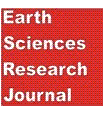
Earth Sciences Research Journal
Pioneering Research for a Changing WorldThe Earth Sciences Research Journal, published by the UNIV NACIONAL DE COLOMBIA, serves as a pivotal platform for the dissemination of knowledge in the diverse field of Earth and Planetary Sciences since its inception. With an ISSN of 1794-6190 and an E-ISSN of 2339-3459, this Open Access journal has been committed to providing unrestricted access to high-quality research since 2004. Located in Bogotá, Colombia, it has gained recognition within the academic community, achieving a Q3 quartile ranking in Earth and Planetary Sciences and notable Scopus rankings, which further underscores its relevance and reach. Its scope encompasses varied research topics, making it an essential resource for researchers, professionals, and students alike, seeking to contribute to or stay informed on the latest developments in the Earth sciences up to the year 2024. The journal not only anticipates cutting-edge research but also emphasizes collaborative dialogues among global experts, driving forward the conversation on critical issues facing our planet.
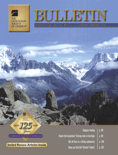
GEOLOGICAL SOCIETY OF AMERICA BULLETIN
Innovative Research Shaping the Geosciences LandscapeThe Geological Society of America Bulletin (GSA Bulletin), with ISSN 0016-7606 and E-ISSN 1943-2674, is a premier scholarly journal published by Geological Society of America, Inc. Based in the United States, this journal has been a cornerstone of geological research since its inception in 1890, making significant contributions to the understanding of Earth sciences over more than a century. Recognized for its rigorous peer-review process, the GSA Bulletin currently holds a prestigious Q1 ranking in Geology, positioning it among the top 14 journals in Earth and Planetary Sciences in terms of Scopus ranking, reflecting the high quality and impact of the research it publishes. Researchers, professionals, and students alike benefit from its comprehensive coverage of geological topics, including sedimentology, volcanology, and paleontology, which supports the advancement of knowledge in the geosciences. While the journal is not open access, it continues to provide a vital platform for innovative research and critical discussions that shape the future of geology.
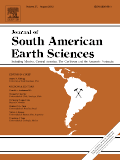
JOURNAL OF SOUTH AMERICAN EARTH SCIENCES
Exploring the Depths of South American GeologyJOURNAL OF SOUTH AMERICAN EARTH SCIENCES is a premier interdisciplinary journal dedicated to publishing high-quality research in the fields of Earth-Surface Processes, Geology, and Paleontology, making it an essential resource for scientists and researchers focused on South American geology and its diverse geological phenomena. Published by Pergamon-Elsevier Science Ltd in the United Kingdom, this journal has been instrumental in disseminating groundbreaking studies since 1988, showcasing contributions that push the boundaries of knowledge in Earth and Planetary Sciences. With an impressive Scopus ranking—positioning it in the 74th percentile for Paleontology and 71st for Geology—this journal not only reflects robust academic quality but also its commitment to addressing critical geological challenges in South America. Researchers will appreciate its objective of advancing understanding of geological processes while providing insights into past, present, and future Earth environments. Although available through traditional subscription models, the journal's vast repository of articles enriches the academic landscape, facilitating the sharing of vital research among professionals, students, and geological practitioners.
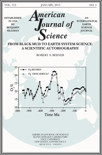
AMERICAN JOURNAL OF SCIENCE
Elevating Scientific Discourse in Earth and Planetary SciencesThe American Journal of Science, published by the esteemed Amer Journal Science, stands as a leading platform for groundbreaking research in the field of Earth and Planetary Sciences. With an impressive impact factor and distinguished Scopus rank 34/195 in its category, the journal occupies a prestigious position in the academic community, reflecting its high-quality and influential contributions to scientific knowledge. The journal’s objective is to disseminate original research, comprehensive reviews, and critical discussions that advance our understanding of geological processes and planetary phenomena, supporting scholars and practitioners in their pursuit of knowledge. Despite its traditional publication structure, viewers can explore its rich repository of works dating from 1945 to present, offering a wealth of insights into the dynamic Earth sciences. The journal remains a vital resource for researchers, professionals, and students eager to engage with the latest scientific findings and foster further innovation in the field.

Mineralogical Journal-Ukraine
Unlocking the mysteries of minerals and earth sciences.Mineralogical Journal-Ukraine is a key academic publication dedicated to advancing the field of mineralogy and geochemistry, under the esteemed auspices of the M.P. Semenenko Institute of Geochemistry, Mineralogy & Ore Formation of NAS Ukraine. Since its inception in 2019, this journal has established itself as an essential resource for researchers and professionals engaged in the study of energy, fuel technology, and the earth sciences, despite its present rankings reflecting a developing impact within these specific categories on Scopus. Published in Ukrainian and available in both print and online formats, the journal not only aims to disseminate high-quality research but also encourages inclusive access to vital findings in mineral exploration, petrology, and geochemical processes. With a commitment to excellence and an expanding scope of research, Mineralogical Journal-Ukraine stands as a pivotal platform for innovation and collaboration among scientists striving to understand the complexities of mineral formation and ore deposits.
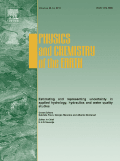
PHYSICS AND CHEMISTRY OF THE EARTH
Illuminating Earth's Processes through Collaborative ScienceThe Physics and Chemistry of the Earth is a premier interdisciplinary journal published by Pergamon-Elsevier Science Ltd, dedicated to advancing the understanding of Earth sciences through the integration of geophysical and geochemical perspectives. With an ISSN of 1474-7065 and an E-ISSN of 1873-5193, the journal serves as a critical platform for researchers and professionals to disseminate key findings and innovative methodologies in the realms of geophysics and petrology. As of 2023, it proudly holds a Q2 ranking in both Geochemistry and Petrology and Geophysics, reflecting its robust impact in the scientific community, with Scopus rankings that position it in the top 20% and 32% of its respective categories. Notably, the journal is available in an open-access format, allowing for greater dissemination and accessibility of research contributions. With a publication history spanning from 1992 to 2024, Physics and Chemistry of the Earth stands as a vital resource for ongoing research and discovery in the Earth sciences, making it an essential read for academics and practitioners alike.

Applied Computing and Geosciences
Fostering Open Access to Pioneering Geoscientific ResearchApplied Computing and Geosciences, published by Elsevier, is an esteemed open-access journal that has been pivotal in the dissemination of research since its establishment in 2019. With an ISSN of 2590-1974 and an impressive impact factor reflective of its high citation rates, this journal occupies a vital space in both the Computer Science and Geology domains, ranking in the Q2 category for both fields as of 2023. The journal’s scope encompasses innovative research that intersects computational methods with geoscientific inquiries, making it an essential resource for scholars and professionals dedicated to advancing these interrelated disciplines. As it continues to publish cutting-edge research through 2024, Applied Computing and Geosciences offers extensive open access options, fostering an inclusive academic environment for students, researchers, and industry experts alike. This journal not only serves as a platform for sharing findings but also plays a critical role in shaping future research pathways in the rapidly evolving landscapes of computing and geosciences.